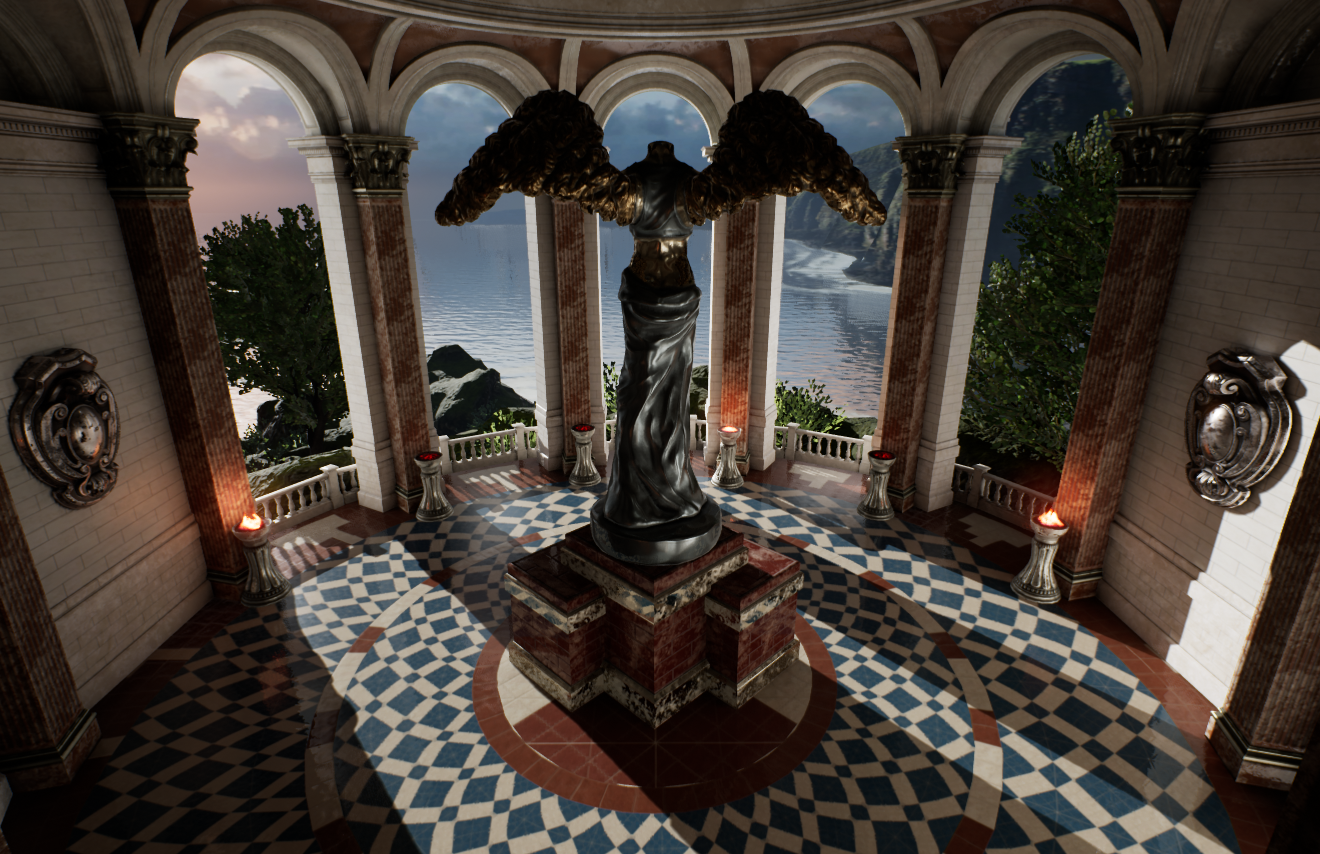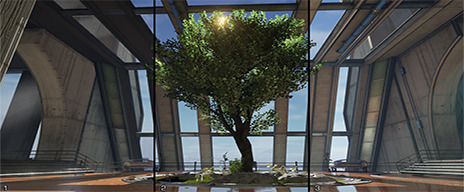Previewing your games inside the UE4 Editor is based on the selected Mobile Platforms.
Choose your operating system:
Windows
macOS
Linux
The mobile renderer for Unreal Engine 4 is a separate renderer from the desktop and console renderer, equipped with its own subset of features that are optimized for mobile devices. The sections on this page provide reference information and how-to guides for mobile-specific implementations of rendering features.
General Information
We recommend that you familiarize the Device Profiles guide, as Mobile devices depend greatly on Device Profiles in order to manage rendering features and scalability across a wide variety of devices. Additionally, you should review the Supported Rendering Features reference page for specifications of what rendering features are supported by the Mobile rendering paths.
Getting Started
Mobile Rendering Features
This section details rendering features that are available for the Mobile renderer and how to activate them.
Reflection Capture Compression For Mobile
Reflection Capture Components now support texture compression on Mobile devices. This reduces the memory footprint of reflection capture, making it more viable for Mobile projects.
To enable this feature, open your Project Settings, navigate to Engine > Rendering > Reflections , and enable Mobile Reflection Capture Compression .

After enabling this feature, Reflection Capture Components on Mobile will use ECT2 texture compression by default. You can also change the compression settings for individual Reflection Capture Components under the Reflection Capture Mobile section in the Details panel.

You can use this to fine-tune the quality of specific reflections.
Ground--Truth Ambient Occlusion (GTAO) on Mobile (Experimental)
Ground-Truth Ambient Occlusion is now available for mobile devices. This implementation of ambient occlusion enables mobile projects to improve the appearance of indirect lighting and shadows with a low performance cost.

To enable GTAO, open your Project Settings, navigate to Engine > Rendering > Mobile , and enable Mobile Ambient Occlusion .

Additionally, You must enable
Mobile HDR
, you need to set the
r.Mobile.AmbientOcclusionQuality
variable in
[Platform]Scalability.ini
to a value higher than 0. After that, you can use GTAO just like you would on other platforms.
Note that when implementing GTAO on Mobile, Mali devices will experience performance issues, as they have fewer than 1024 maximum compute shader threads.
Dynamic Spotlight Shadows for Mobile (Experimental)
Dynamic spotlight shadows are now supported on Mobile. This allows spotlights to cast shadows on both static and moveable meshes.
To enable spotlight shadows on Mobile, open your Project Settings, navigate to
Engine
>
Rendering
>
Mobile Shader Permutation Reduction
, and enable both
Support Movable Spotlights
and
Support Movable Spotlight Shadows
.
You can also change these in your config files by setting
r.Mobile.EnableMoveableSpotlights
and
r.Mobile.EnableMoveableSpotlightShadows
to 1.

Spotlight shadow maps share the same texture sampler with CSM in the mobile base pass pixel shader, and both spotlight shadows and CSM use the same shadow map atlas. CSM is guaranteed to have space, while the spotlights will be sorted by shadow resolution.
The maximum number of visible shadows is limited to 8 by default, but you can change this by changing the value of
r.Mobile.MaxVisibleMovableSpotLightsShadow
. The resolution of the spotlight shadow is based on screen size and
r.Shadow.TexelsPerPixelSpotlight
.
Pixel Projected Reflection For Mobile(Experimental)
In Unreal 4.26, Pixel Projected Reflection support was added for Mobile devices, enabling reflection planes to generate screen-space reflections on Mobile.

To use this feature, you must have
MobileHDR
enabled, and you need
r.Mobile.PixelProjectedReflectionQuality
set to a higher value than 0.
Go to
Project Settings
>
Mobile
and set the
Planar Reflection Mode
to your desired setting. You must use either
MobilePPRExclusive
or
MobilePPR
to enable pixel-projected reflections.

Currently, the following modes are supported:
-
Usual ---The planar reflection actor will function identically on all platforms.
-
MobilePPR ---The planar reflection actor will work as normal on PC/Console platforms, but uses pixel projected reflections on Mobile platforms.
-
MobilePPRExclusive ---The planar reflection actor will only be used for pixel projected reflections on mobile platforms. This leaves room for PC and Console projects to use traditional SSR instead.
By default, only high---end mobile devices enable
r.Mobile.PixelProjectedReflectionQuality
in
[Project]Scalability.ini
.



